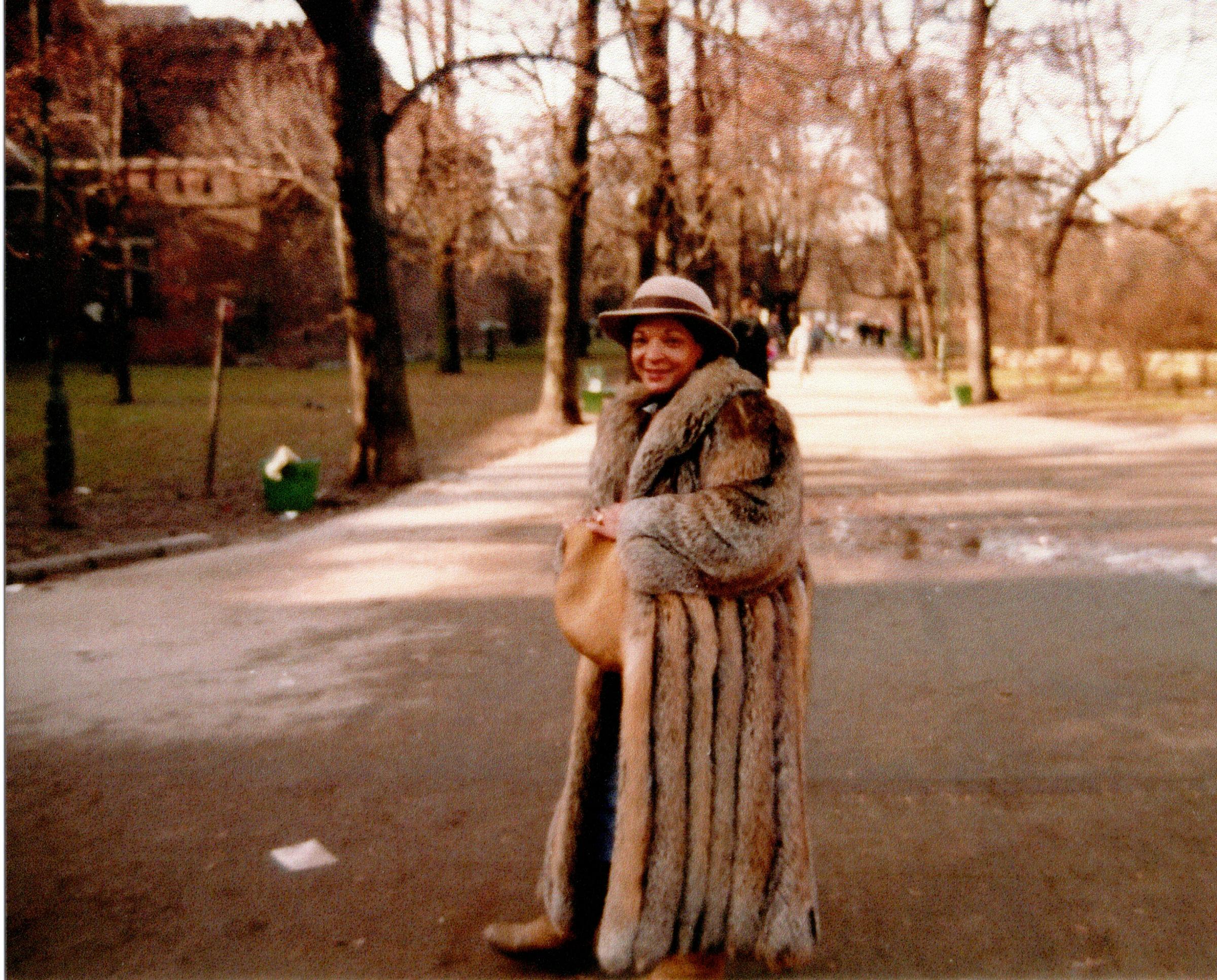When it comes to women and spying, popular culture fixates on the femme fatale: a Mata Hari type of female agent, wanton and—of course—sinister, using her sex to steal secrets. This “honeypot” stereotype recently cropped up in The Sun, a British tabloid, in a piece claiming that Russia is assembling an “army” of “deadly beauties” to help win its contest with the West. A throwback to the spicy if dubious intrigue of Cold War-era spy tales, the article cited a handful of small-time models and beauticians apprehended in various London suburbs as evidence of massive spy “networks.” Vladimir Putin, it seemed, was running “seduction schools” to train “glam spies” and turn them loose on the U.S. and Britain. It was surely no coincidence that the thinly sourced piece ran alongside a lurid string of photos of bikini-clad hotties looking ruthless.
It's true that human intelligence (HUMINT) remains a critical piece of the spy landscape, even in our era of Russian bot farms and AI-powered drone attacks. But historically, when it comes to women and espionage, the most effective agent is generally not a “Bulgarian bombshell,” but rather the woman you’d never give a second glance. Historically, women spies have traded not on their sexuality but their perceived insignificance. So useful are the trappings of drab domesticity—the trundling baby carriage, the hefting of grocery bags—that the CIA had a term for the safety they confer: it was called “housewife cover.” And many of the people who have used this cover were, in fact, actual wives.
For decades during the Cold War, thousands of women kept the Central Intelligence Agency running. Chief among these were the wives of male agents, who often served alongside their husbands, receiving tradecraft training but little to none of the pay. Back then, free spousal labor was common in government service: during much of the Cold War, even into the 1980s, wives of politicians and diplomats were expected to serve as full-time adjuncts. At the U.S. State Department, male diplomats’ performance evaluations took into account wives’ willingness to roll bandages and host potlucks. In the military, wives formed auxiliaries, even broke enemy ciphers, observing a strict hierarchy depending on the rank of the men they married.
More From TIME
But the CIA took the expectation of free spousal labor to new heights. Many wives functioned as clandestine extensions of their spymaster husbands. At the CIA, the formal title for spy is “case officer.” The job entails working overseas and convincing foreign “assets” to hand over their country’s secrets. Case officers work undercover, often posing as executives or diplomats. And it’s this kind of secretive yet social role in which spouses are natural allies; at a diplomatic reception, who better than a wife to sidle around to the wife of a potential asset, chat her up, and issue an invitation to dinner, cracking open the door to a recruitment? While James Bond movies are set in casinos and ski resorts, much real-life spy work unfolds in the home, where a case officer can expect privacy and exert control. Wives were the people who made that happen.

The Cold War spywife also needed to know how to react in an emergency. At any time of day or night, a wife might hear a knock on the door and find herself confronted with a “walk-in,” the term for a foreign national who shows up unannounced, with secrets to hand over. “You answer the door, and it’s a Russian wanting to defect,” recalls Lisa Harper, a retired case officer who, in the 1970s, was obliged to serve as an unpaid wife before ascending to the case officer ranks. Often, the husband would be away on a mission, and the wife had to handle the walk-in. “The smart husband has prepared his wife for this eventuality. Who do you call at the embassy? What is the code word you say?”
For decades, it was an open secret that many senior CIA officers built their careers with the help of apt and loyal wives. Director William Colby’s 1978 memoir Honorable Men: My Life In the CIA is full of praise for his first wife, Barbara Colby, who, on an early posting to Sweden, “did much to shore up my weak cover” by jumping into the “job of the junior diplomat’s wife with her typical enthusiasm and charm.” In Vietnam, her “warm and outgoing personality” carried them through dinners and receptions.
Women made great spies, but the CIA nonetheless discriminated against women who wanted to join the case officer ranks; for decades, it was widely held that female spies could not operate in male-dominated cultures. Yet at the very same time, spy wives were proving the opposite: housewife cover transformed an apparent weakness—lower status—into a strength. Whatever a housewife was doing—shopping, lunching—it surely wasn’t important, adversaries thought. If she reached beneath a chair to pick up a message, who would notice? The more patriarchal the culture, the more a wife could get away with.
The Soviet spy service, KGB, tracked suspected CIA officers as they moved from one diplomatic posting to another, so that by the time a case officer was posted to Moscow, his true identity was likely known to the KGB. The minute an American case officer pulled out of a garage or parking space, three or four Soviet surveillance cars—or more—would materialize.
In these “hard target” countries—the Soviet Union, Cuba, China—the bulk of a case officer’s job was physical, low-tech, exhausting, and time-consuming. A huge amount of time was spent trying to elude surveillance. Sometimes, the goal was to make a dead drop, which entailed placing a message in a fake rock, tree trunk, or other hiding place; or, leave a coded signal such as a chalk mark on a wall or mailbox; or make a “brush pass,” where a message or payment could be handed off on, say, an escalator. Even harder was a “car toss” in which the case officer would fling a message out of a car, in a bottle or other projectile, aimed at a bush or other pickup site.
With a wife to help, all these feats became more doable. The wife, sitting innocently in the passenger’s seat, might roll down the window and make the toss. Or she could drive so her husband could toss when a bend in the road caused the surveillance car to lose sight of them. Not only did a female companion make a man less conspicuous, but an alert wife could help spot a tail. Wives working in hard targets underwent the same CIA anti-surveillance training as did their husbands, and often turned out to be better at detecting a disguised stranger. Women are always alert to interlopers in their personal space.
All in all, a competent wife was a case officer’s most important asset. Take the example of Shirley Sulick, a much beloved CIA spouse who was one of the best. Shirley and her husband Michael (Mike) Sulick were an early biracial couple: Mike, now retired, is white, and Shirley, who died in 2021, was Black. During Mike’s CIA career—he rose to head the agency’s clandestine service—Shirley’s charisma and good nature were crucial to his well-being and his career trajectory. For a lot of wives, “If they haven’t been overseas before, whether it’s Tokyo or Peru, whatever, it could be daunting,” Mike Sulick told me. But no aspect of overseas work was daunting for Shirley, who could socialize with anybody. She was elated when they went to Moscow and she could concentrate on pleasures like evasive driving. “This,” she said, “is my wheelhouse.” Shirley had a heavy foot and enjoyed messing with the Soviet adversaries. “I’m going to go out and play with the boys,” she would tell her husband, before setting out in the car to lead their surveillance on a chase.

Working a hard target made for a constrained marital existence, since apartments were bugged. But there were ways to exploit the lack of privacy. At one New Year’s Eve party, Mike Sulick pretended to get very drunk, and Shirley propped him up as he staggered home. Knowing the Soviets were listening, he slurred his words and demanded she bring him Irish coffee. His surveillers assumed they could safely sleep in on the following holiday morning. Instead, Mike got up early and struck out unobserved.
Wives could also help with dead drops. Shirley Sulick made a point of carrying a huge purse, out of which she would let fall a pencil or lipstick, and sweep up a message along with it. They’d go on a picnic or tour a church, and Mike would make a big production of taking a photo. While the KGB officers watched, Shirley would go around the side and pick up whatever had been placed there.
So effective was this time-tested housewife cover that, as women finally began to be hired and paid to do spy work in the 1970s and 1980s, female case officers continued to deploy harmless domesticity, when it made sense to do so, as a cover identity. Sometimes the tactic even fooled other CIA women. One female operative recalled to me about being in an U.S. embassy compound and seeing an American woman suntanning by a pool. She experienced a flash of envy, thinking this was some languid wife accompanying her husband on a cushy posting. Only later did she realize it was a colleague, doing the same work she was. These days, the helpmeet might be a husband or same-sex partner, but the point remains the same: the best spies are the ones you’d never suspect.
Adapted from the book THE SISTERHOOD: The Secret History of Women at the CIA by Liza Mundy. Copyright © 2023 by Liza Mundy. Published in the United States by Crown, an imprint of Crown Publishing Group, a division of Penguin Random House LLC. All rights reserved.
More Must-Reads from TIME
- Cybersecurity Experts Are Sounding the Alarm on DOGE
- Meet the 2025 Women of the Year
- The Harsh Truth About Disability Inclusion
- Why Do More Young Adults Have Cancer?
- Colman Domingo Leads With Radical Love
- How to Get Better at Doing Things Alone
- Michelle Zauner Stares Down the Darkness
Contact us at letters@time.com
